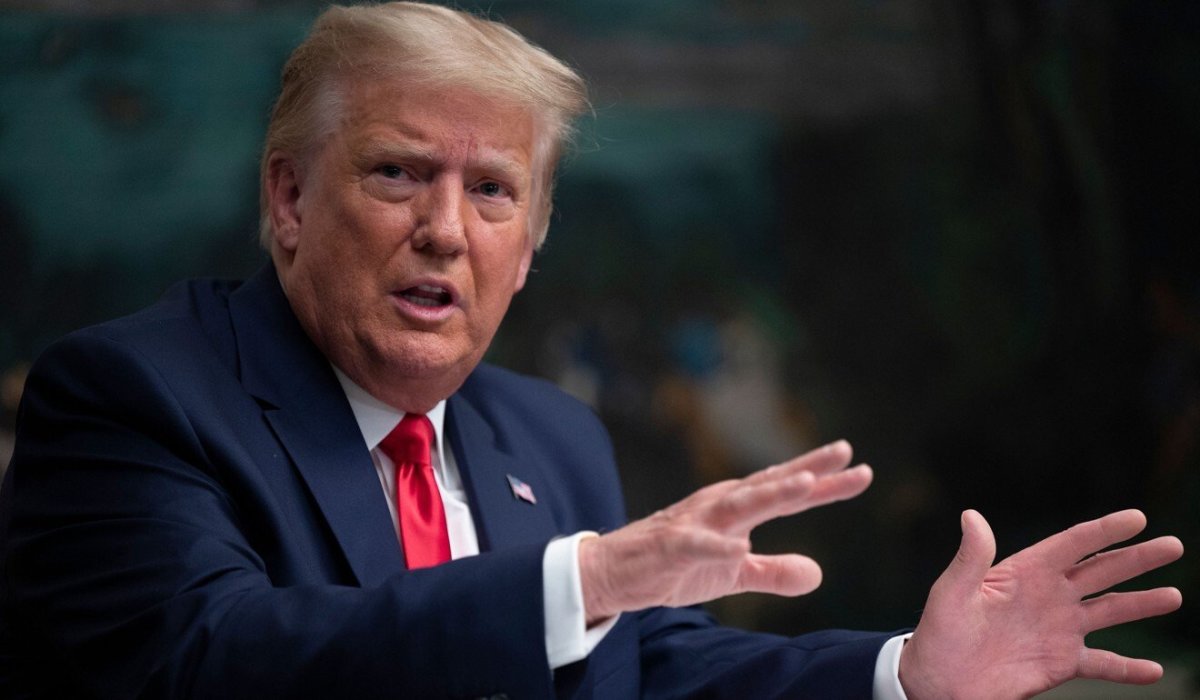Donald Trump’s reelection was met with jubilation from investors excited about a pro-business agenda, but the party ended when it turned out tariffs were at the top of the President’s to-do list.
Stock prices slid in February as Trump signed the first executive order laying out plans for a 10% tariff on China and a 25% tariff on Mexico, but by mid-month, the S&P 500 hit a record high as investors still thought tariffs were a bargaining chip.
💵💰Don’t miss the move: Subscribe to TheStreet’s free daily newsletter 💰💵
Optimism ended in March, though, and the S&P erased all gains made during the Trump presidency as tariffs went into effect and the Liberation Day’s announcement of “reciprocal tariffs” brought more disaster, with the Dow dropping more than 1,000 points and the S&P and Nasdaq experiencing sharp declines. Investors got relief in the form of a 90-day pause on the “reciprocal tariffs,” but the resulting rally came to a swift end with an early-April escalation of trade wars.
Then, a proclamation pausing some auto tariffs and a softening of tone led to the first multi-day winning streak for the S&P and Dow at the end of April, but May brought another market slide on news of a threatened 50% tariff on the EU, which was soon delayed.
Related: Federal Court delivers massive blow to Trump’s tariff plan
It’s been a dizzying ride.
With all this chaos, exhausted investors were greeted with welcome relief by the news of an International Trade ruling on May 28, stating that President Trump’s sweeping tariffs were an overreach of his authority under the federal emergency powers used to put them in place.
The 3-0 ruling – issued by Judges Jane Restani (appointed by President Reagan), Gary Katzmann (appointed by President Obama) and Judge Reif (appointed by President Trump) – blocked the 10% baseline tariff, the 20% additional tariff on imports from China, and the 25% tariff on non-USMCA compliant imports from Canada and Mexico, and gave the Administration 10 days to halt collections.
European stocks and Wall Street futures both rose upon the news, but this excitement may be premature, as Chief U.S. Political Economist Alec Phillips of Goldman Sachs says the Administration has multiple options for imposing similar tariffs.
Shutterstock
How the Trump Administration could get the tariff agenda back on track
Despite the court’s ruling, Phillips believes the President could quickly impose a 15% across-the-board tariff again under Section 122 of U.S. trade law.
Phillip says this law allows the President to impose tariffs for up to 150 days “to address a balance of payments deficit or to prevent an imminent and significant depreciation in the dollar,” without any formal investigation. However, while tariffs could be implemented within days under this authority, it’s not clear if they could be paused and restarted.
Related: Stock market reacts to new EU tariff proposal
The Trump Administration has also used Section 232 already to implement tariffs based on national security grounds. Tariffs on steel, auto, and aluminium are in place under this authority, and tariffs on pharmaceuticals, semiconductors, and other electronics could potentially also be subject to tariffs on national security grounds.
Some laws also allow longer-term, broader tariffs
While Section 122 authority comes with a time limit and Section 232 can only be used to implement tariffs on select industries, the president also has some other options for more long-term tariffs.
Specifically, the Administration could order the launch of Section 301 investigations on trading partners to determine if they are violating trade agreements. Such an investigation would lay the groundwork to put tariffs in place, but this would be a longer process, as the investigation could take several weeks.
Countries found to be discriminating against the U.S. could also be subject to tariffs of up to 50% under Sec. 338 of the Trade Act of 1930, and no formal investigation is required to impose these tariffs, but Goldman Sachs says this authority has never been used.
Related: Consumers are finally feeling better about the economy
Phillips believes the most likely outcome is that Section 122 will be used to implement an across-the-board tariff immediately to provide time for the Administration to launch Section 301 investigations into specific trading partners and lay the groundwork for tariffs that extend beyond the 150-day limit.
Of course, there’s a practical limit on how many countries can be investigated, so smaller trading partners or those with small trading surpluses may not be subject to tariffs after the 150-day limit ends.
If the Trump Administration exercises the authority under these laws, investor optimism over the trade court’s decision may be misplaced, as the Administration’s tariff agenda won’t be derailed for long, and the chaos is likely to continue.


